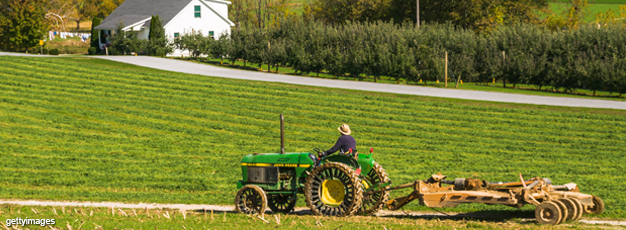The stage is set for opportunities of a magnitude that will make India Inc sit up and take note
By Lalit Nambiar
India lives in its villages. With 18 million households (representing 45 per cent of India’s workforce) living in rural India, hardly anyone would disagree with the economic or political importance of improving their lot. The base of the rural pyramid has low income levels and depends on agriculture, providing labour on the farm and services related to the farm.

At Rs 23.72 trillion, the sector made up about 17.4 per cent of the country’s GDP in 2016-17. But the share of GDP from agriculture has been falling steadily over the years, once the initial benefits of the Green Revolution were absorbed by the economy.
Farm economy
The decrease in GDP from agriculture has severely hit the bottom of the rural pyramid, already vulnerable, given the unskilled nature of rural abilities and poor education levels. There are enough anecdotes of even affluent farmers who do not want their sons to follow them into the traditional occupation, due to the poor terms of trade. This only serves to highlight the unhappy predicament of their less fortunate brethren.
Data indicates that the economics of the farm has clearly deteriorated, with the share of agriculture in rural employment falling over the years. A recent (November 2017) NITI Aayog study highlights some of the major changes in rural areas that may belie the common perception on the predominance of agriculture in the rural economy. The study says as much as two-thirds of rural income is now generated in non-agricultural activities.
Unfortunately, the impressive growth of non-agricultural sector in the countryside has not brought significant employment gains to the average rural Indian. The Prime Minister wants to double farmer income by 2022 and ensure gainful employment for this huge workforce. There has been a holistic and concerted drive by the government apparatus to improve agricultural yields, by optimizing delivery of inputs, enabling better price discovery for farmers and protecting them from risks by way of improved insurance coverage.
Market impact
The efforts are likely, therefore, to be sustained over many years. Further, the scale of the effort will likely be unprecedented and the effectiveness unparalleled as it uses the JAM trinity (JanDhan-Aadhaar-Mobile) to optimize the allocation of government funds and usage of resources.
As leakages are addressed, the growth in absolute amounts of government spend in this area may reduce but its effectiveness will presumably go up. This means, if one have a huge population — nearly equivalent to that of the African continent — and see a secular uptick in income over the next many years, the absolute amount of money involved is immense; enough to make Corporate India sit up and take note.
The surplus from higher farm productivity in the hands of the farmer will invariably be used for consumption in his modest home in terms of conveniences, healthcare, discretionary spend and education, as well as amounts ploughed back as investment into the farm to raise productivity via automation/irrigation and quality inputs.
Revolution 2.0
India is possibly on the verge of only its second step-change in farm evolution in perhaps two centuries, the first one having been the Green Revolution, which began in the mid-1960s and the benefits of which ended somewhere in the 1980s. After almost five or six decades, one now sees the beginnings of a second tectonic shift in rural economics, one that is likely to impact the lives of millions.
Second, market valuations are in reasonably uncharted territory and new ideas have to have something secular and enduring going for them over an extended period rather than merely follow the earnings trend in the next few quarters.
Cascading effect
The surplus from higher productivity will be spent on healthcare, discretionary spend and education, as well as investment back in the farm. The stage is set for the advent of very large farm-driven business opportunities spanning several years and for the attendant investment opportunities they stand to generate.
(The writer is EVP & Fund Manager at UTI AMC)





